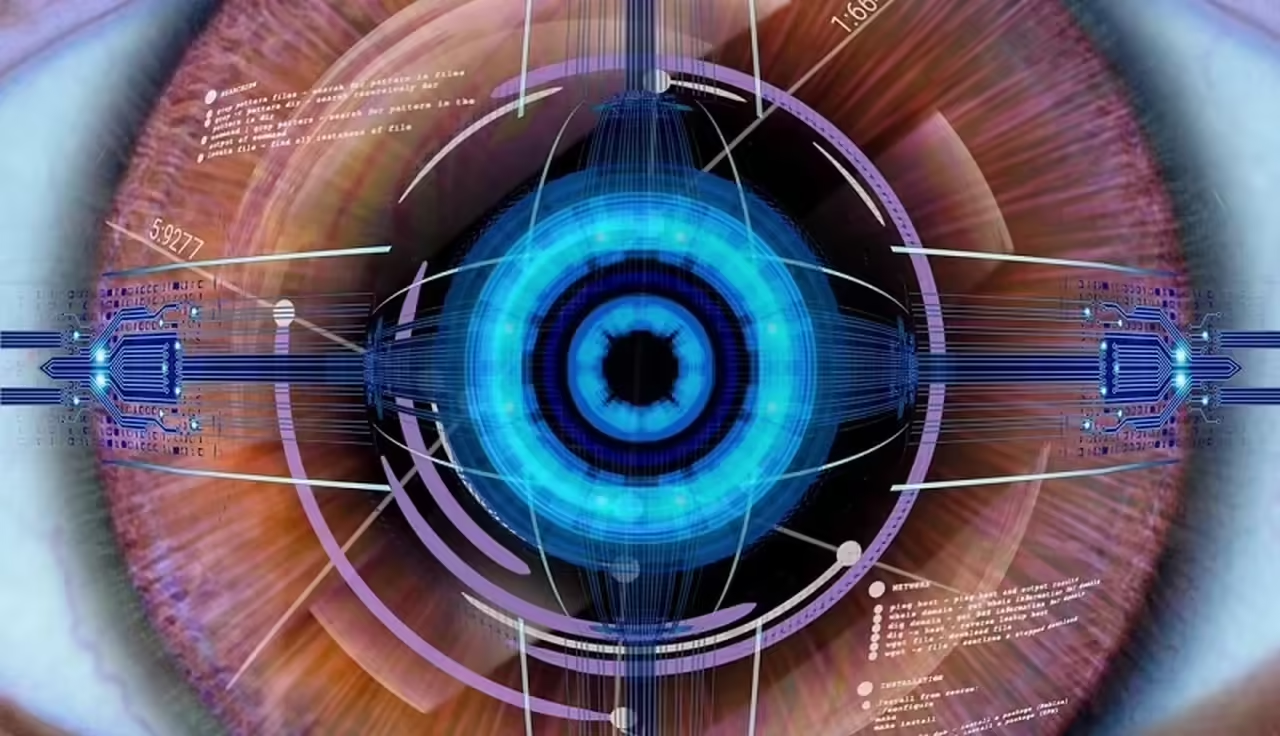
The history of the PlayStation gaming console is a fascinating journey that showcases the power of collaboration and innovation in shaping the landscape of the gaming industry. Born out of a partnership between two industry giants, Sony and Nintendo, the PlayStation brand has evolved from a rejected add-on to a groundbreaking series of consoles that have left an indelible mark on gaming history.
The Birth of a Partnership
The origins of the PlayStation can be traced back to the late 1980s when Sony and Nintendo first embarked on a collaboration that was meant to revolutionize gaming. Sony, known for its expertise in electronics, and Nintendo, a leading player in the gaming world, joined forces to create a CD-based add-on for the Super Nintendo Entertainment System (SNES). This collaboration aimed to bring the vast storage capacity of CDs to the world of gaming, allowing for more complex and immersive experiences.
However, as the project progressed, creative differences and disputes over licensing led to the unraveling of this partnership. The fallout between Sony and Nintendo marked a crucial turning point that would set Sony on a path toward creating its gaming console.
From Add-On to Standalone Console
Undeterred by the failed collaboration, Sony decided to take the technology they had developed for the CD-based add-on and transform it into a standalone gaming console. This marked the birth of the original PlayStation, often referred to as the PSX. Released in 1994, the PlayStation quickly gained popularity due to its impressive graphics, vast game library, and developer-friendly architecture.
One of the key factors that contributed to the success of the PlayStation was Sony’s willingness to collaborate with third-party developers. Unlike its competitors, Sony embraced game developers and provided them with the tools they needed to create innovative and immersive gaming experiences. This collaborative approach not only attracted a wide range of games to the platform but also fueled the console’s reputation for innovation.
Pushing Technological Boundaries
With each new iteration of the PlayStation, Sony continued to push technological boundaries. The PlayStation 2, released in 2000, introduced DVD playback and online gaming capabilities, further expanding the console’s appeal beyond gaming enthusiasts. The PlayStation 3, released in 2006, brought the concept of the Cell Broadband Engine—a powerful processor designed for multimedia applications—showcasing Sony’s commitment to innovation in hardware design.
The Evolution Continues
The release of the PlayStation 4 in 2013 marked another significant milestone for the brand. Embracing the social and online gaming trends of the time, the PS4 integrated seamlessly with streaming services and encouraged community engagement through social features. This iteration also highlighted Sony’s emphasis on delivering top-notch gaming experiences through advanced graphics and performance.
A Paradigm Shift
In the early 1990s, the gaming landscape was dominated by established players, and the concept of home consoles was firmly rooted in a particular formula. However, Sony sought to challenge this status quo by introducing a fresh perspective. The result was the PlayStation, a gaming console that not only pushed technical boundaries but also introduced a new level of immersion and storytelling to the medium.
The Power of CD Technology
At the heart of the PlayStation’s innovation was the decision to utilize CD technology instead of traditional cartridges. This allowed for significantly larger storage capacity, enabling game developers to create more expansive worlds, intricate narratives, and richer soundscapes. As a result, games like “Final Fantasy VII” and “Metal Gear Solid” redefined the gaming experience, captivating players in ways that were previously unimaginable.
A Playground for Diverse Experiences
The PlayStation’s success was not solely attributed to its technical prowess—it was also about fostering a diverse range of gaming experiences. Sony’s approach to third-party developers was revolutionary; they provided a platform that encouraged creativity and experimentation. This open invitation led to the creation of an eclectic library of games, from action-adventure and role-playing epics to innovative puzzle and rhythm titles.
Shaping the Future
The release of the PlayStation also marked the beginning of a new era of 3D graphics and gameplay. Games like “Tomb Raider” and “Resident Evil” showcased the potential of three-dimensional environments, setting a precedent for future titles. Additionally, Sony’s commitment to evolving hardware, as seen in subsequent PlayStation iterations, further solidified their role as pioneers in the industry.
Cultural Impact and Legacy
The PlayStation not only revolutionized gaming but also ingrained itself in popular culture. Iconic characters like Crash Bandicoot and Solid Snake became household names, and gaming started to be seen as a mainstream form of entertainment. Sony’s dedication to innovation, combined with a deep understanding of player desires, has allowed the PlayStation brand to maintain its relevance across multiple generations of gamers.
PlayStation 1: A Glimpse into the First Generation
The gaming landscape has witnessed a remarkable evolution, and at the heart of this transformation lies the original PlayStation. Launched at a time when 3D graphics were an exciting novelty and gaming experiences were expanding into uncharted territory, the PlayStation 1 played a pivotal role in shaping the trajectory of the gaming industry.
A New Era Dawns
In the mid-1990s, the gaming scene was undergoing a paradigm shift. The transition from 2D to 3D graphics was opening up possibilities for more immersive and visually stunning gameplay. The PlayStation 1, or PS1, emerged as a catalyst for this transition, capitalizing on cutting-edge technology to deliver a gaming experience that was unprecedented in its depth and complexity.
The Birth of 3D Gaming
The PlayStation 1 showcased the potential of 3D gaming, introducing players to worlds that felt more expansive and realistic than ever before. Games like “Metal Gear Solid” and “Final Fantasy VII” combined captivating narratives with graphics that, at the time, pushed the boundaries of what was thought possible. These titles redefined the art of storytelling in video games, setting the stage for future generations of narrative-driven gameplay.
Diverse Gaming Library
One of the defining features of the PS1 was its diverse game library. Players could delve into a wide range of genres, from action-adventure and role-playing to racing and puzzle games. This diversity of titles not only appealed to a broader audience but also contributed to the console’s lasting impact on popular culture.
Cultural Significance
The PlayStation 1 not only revolutionized gaming but also solidified gaming’s place in mainstream culture. Iconic characters like Crash Bandicoot and Lara Croft became household names, and the PS1’s influence extended beyond gaming circles. It played a role in introducing a new generation to the immersive world of interactive entertainment, paving the way for gaming to become a universal form of recreation and art.
Technological Legacy
The original PlayStation left a technological legacy that continues to influence gaming hardware design. The console’s use of CDs for gaming media marked a departure from traditional cartridges, opening up avenues for larger games and more intricate audiovisual experiences. This decision laid the foundation for the optical media standard that prevails in gaming consoles to this day.
PlayStation 2: The Quantum Leap in Gaming Experience
The history of video games is marked by moments of revolutionary advancement, and one of the most significant milestones is the arrival of the PlayStation 2. With its launch, Sony not only created a video game console but gave life to a platform that redefined the gaming experience and left an indelible mark on the industry.
A Technological Leap
Launched in 2000, the PlayStation 2 (PS2) represented an impressive technological leap. It was the first console to incorporate a DVD player, which not only turned it into a multimedia entertainment hub but also helped popularize the disc format. This allowed gamers to enjoy not only visually richer games but also movies on a single device.
The Power of Graphics
The PS2 took 3D graphics to a new level, with games harnessing the capability to render more expansive and detailed worlds. Titles like “Gran Turismo 3: A-Spec” and “Shadow of the Colossus” showcased the console’s ability to generate visually stunning environments, enhancing immersion and the feeling of being inside the game.
Diversity of Gaming Experiences
The PS2 stood out not only for its technological advancements but also for the diversity of gaming experiences it offered. From epic role-playing games to sports simulators and musical titles, the console had something for every taste. The inclusion of the EyeToy, a camera accessory, also introduced new forms of interactive gameplay that went beyond the traditional controller.
Enduring Legacy
The PS2 not only captured gamers’ hearts but also set a record as one of the best-selling consoles of all time. Its longevity and lasting popularity are a testament to its impact on gaming culture. Moreover, the PS2’s game library continues to be celebrated for its quality and variety, with titles that are still beloved by fans to this day.
Exploring Evolution: PlayStation 3 and the High-Definition Era
The gaming landscape has witnessed a series of transformative moments, and the arrival of the PlayStation 3 marked a significant leap forward. With its foray into high-definition gaming, the PlayStation 3 not only pushed technological boundaries but also ushered in an era of visual splendor and immersive experiences that captivated gamers worldwide.
Embracing High-Definition
Released in 2006, the PlayStation 3 (PS3) marked Sony’s ambitious foray into the realm of high-definition gaming. With the integration of a Blu-ray player, the console positioned itself at the forefront of visual fidelity and data storage capabilities. This move paved the way for more expansive game worlds, cinematic storytelling, and the potential for unparalleled realism.
The Power of the Cell Broadband Engine
At the heart of the PS3’s prowess was the Cell Broadband Engine, a revolutionary processor designed to handle complex calculations and graphics rendering. This cutting-edge technology was a departure from conventional hardware architectures, allowing for intricate physics simulations, detailed character animations, and environments that felt more dynamic and alive.
A Visual Renaissance
The PlayStation 3 era brought about a visual renaissance, showcasing the potential of high-definition graphics. Games like “Uncharted 2: Among Thieves” and “The Last of Us” demonstrated the console’s capacity to deliver lifelike characters, detailed environments, and emotionally resonant narratives with a level of detail that was previously unimaginable.
Online and Multimedia Integration
The PS3 also marked a significant shift towards online and multimedia integration. The PlayStation Network introduced a platform for online multiplayer gaming, digital downloads, and community engagement. Additionally, the console’s ability to serve as a media center further solidified its position as a hub for entertainment beyond gaming.
Innovation and Connectivity: PlayStation 4 and the Era of Online Gaming
The gaming industry has undergone a transformative evolution, and the PlayStation 4 stands as a hallmark of innovation and connectivity. Released in 2013, the PlayStation 4 (PS4) not only ushered in a new generation of gaming experiences but also revolutionized the way players connect, share, and engage in a digital world that stretches beyond the confines of the screen.
Revolutionizing Connectivity
The PS4 marked a paradigm shift by embracing connectivity as a core principle. With features like Share Play and Remote Play, players could seamlessly invite friends to join their games virtually or stream their gameplay to other devices. This interconnectedness not only changed how gamers experienced their favorite titles but also fostered a sense of community that transcended geographical boundaries.
The Power of Social Gaming
Social gaming became central to the PS4 experience. The console’s intuitive interface allowed players to easily share screenshots, videos, and achievements on social media platforms, fostering a culture of collaboration and competition. The integration of Twitch and YouTube streaming also turned players into broadcasters, creating a new form of entertainment that blurred the lines between players and viewers.
Online Multiplayer and eSports
The PS4 embraced the thriving world of online multiplayer and eSports. With the introduction of PlayStation Plus, players gained access to online multiplayer and a monthly selection of free games. This subscription model not only incentivized online engagement but also contributed to the rise of eSports and competitive gaming, transforming gaming from a solitary experience into a global phenomenon.
Expanding Entertainment Horizons
The PS4 wasn’t just about gaming; it aimed to be an entertainment hub. With apps for streaming services, players could seamlessly switch from gaming to watching movies, TV shows, and even participating in virtual reality experiences. This versatility highlighted the console’s role as a central piece of home entertainment.
Innovation in Hardware and Design
The PS4’s hardware was optimized for performance, delivering stunning graphics and seamless gameplay experiences. The introduction of the DualShock 4 controller, with its touchpad, light bar, and share button, reimagined how players interacted with games. These innovations were designed to enhance immersion and facilitate sharing.
PlayStation 5: The Future of Interactive Entertainment
The dawn of a new gaming era arrived with the launch of the PlayStation 5 (PS5). Released in 2020, the PS5 not only represents the cutting edge of gaming technology but also promises to redefine the boundaries of interactive entertainment. With its blend of innovation, power, and immersive experiences, the PS5 is poised to shape the future of gaming and beyond.
A Technological Marvel
The PS5 is a testament to the rapid advancement of technology. With its custom-designed CPU and GPU, lightning-fast SSD, and innovative cooling system, the console delivers breathtaking graphics, near-instant loading times, and unprecedented levels of immersion. The inclusion of ray tracing technology brings lifelike lighting and reflections, making virtual worlds feel more realistic than ever before.
A Focus on Immersion
The DualSense controller is a cornerstone of the PS5’s immersive experience. Its advanced haptic feedback and adaptive triggers allow players to feel the impact of in-game actions, from the tension of drawing a bowstring to the sensation of driving on different terrains. This level of tactile feedback enhances immersion, making the virtual world feel tangible and responsive.
Expanding Horizons with 3D Audio
The PS5 introduces a new era of audio with its Tempest 3D AudioTech. This technology creates a sense of spatial awareness, allowing players to hear sounds from all directions, whether it’s the rustling of leaves or the distant echo of footsteps. This revolutionary audio experience further immerses players in the virtual worlds they explore.
Seamless Transition to Digital
The PS5’s emphasis on digital distribution and backward compatibility streamlines the gaming experience. With a digital storefront and the ability to access a library of past PlayStation titles, players can seamlessly transition between games and generations. This approach reflects the industry’s shift towards digital content consumption.
Innovative Game Design
The PS5 has sparked a wave of innovative game design. Titles like “Demon’s Souls” showcase the console’s potential for creating visually stunning and emotionally resonant experiences. As developers explore the capabilities of the hardware, players can anticipate new genres, gameplay mechanics, and storytelling techniques.







